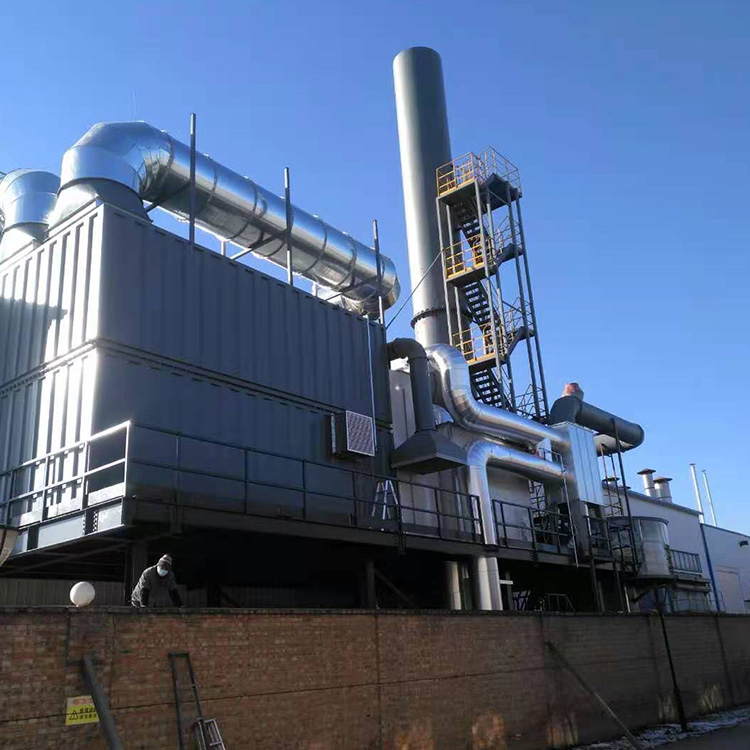Considerations for High-temperature Incinerators
2024-04-29
A high-temperature incinerator is a specialized type of industrial furnace designed to safely and efficiently combust waste materials at extremely high temperatures. These incinerators are commonly used in various industries and applications where waste disposal needs to meet stringent environmental regulations or where the waste contains hazardous or toxic materials that require complete destruction. Here are some key features and considerations for high-temperature incinerators:
1. High Operating Temperatures: High-temperature incinerators typically operate at temperatures ranging from 800°C to 1200°C (1472°F to 2192°F) or even higher. These elevated temperatures are necessary to ensure the complete combustion of waste materials, including organic compounds, volatile organic compounds (VOCs), and other contaminants.
2. Primary and Secondary Combustion Chambers: High-temperature incinerators usually consist of multiple chambers, including a primary combustion chamber and a secondary combustion chamber. The primary chamber is where waste materials are initially introduced and ignited, while the secondary chamber ensures thorough combustion of any remaining gases and particulates, minimizing emissions.
3. Air and Fuel Control Systems: Precise control of air and fuel flow is essential to maintain optimal combustion conditions and temperature levels within the incinerator. Advanced control systems monitor and adjust these parameters in real-time to ensure efficient and stable operation while minimizing emissions.
4. Emission Control Technologies: High-temperature incinerators are equipped with various emission control technologies to reduce the release of pollutants into the atmosphere. These may include scrubbers, filters, electrostatic precipitators, and catalytic converters, which capture and neutralize harmful gases, particulates, and pollutants before they are discharged.
5. Heat Recovery Systems: Many high-temperature incinerators feature heat recovery systems that capture and utilize the thermal energy generated during the combustion process. This recovered heat can be used to generate steam, produce electricity, or provide heating for industrial processes, improving overall energy efficiency and reducing operating costs.
6. Monitoring and Compliance: Continuous monitoring of key operating parameters, such as temperature, airflow, and emissions, is necessary to ensure compliance with environmental regulations and permit requirements. Data logging and reporting systems track performance metrics and provide documentation for regulatory compliance and reporting purposes.
7. Material Handling and Feed Systems: Efficient material handling and feed systems are essential for the safe and reliable operation of high-temperature incinerators. Automated feeding mechanisms, conveyors, and waste handling equipment ensure a steady and uniform supply of waste materials to the combustion chambers while minimizing operator intervention.
8. Safety Systems and Controls: High-temperature incinerators incorporate various safety features and controls to prevent accidents, mitigate risks, and protect personnel and equipment. These may include fire detection and suppression systems, emergency shutdown procedures, gas detection systems, and exhaust gas monitoring devices.
9. Maintenance and Inspections: Regular maintenance, inspections, and cleaning are essential to ensure the continued performance and longevity of high-temperature incinerators. Scheduled maintenance activities, including refractory repairs, burner maintenance, and equipment inspections, help prevent downtime and ensure compliance with safety and environmental standards.
10. Training and Operator Competency: Proper training and certification of personnel operating high-temperature incinerators are crucial for safe and efficient operation. Operators should receive comprehensive training on equipment operation, safety protocols, emergency procedures, and environmental compliance requirements.
Overall, high-temperature incinerators play a critical role in waste management and environmental protection by safely and effectively disposing of various types of waste materials while minimizing environmental impact and ensuring regulatory compliance. Advanced technologies and control systems continue to improve the efficiency, reliability, and environmental performance of these essential industrial facilities.



